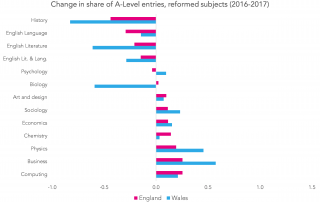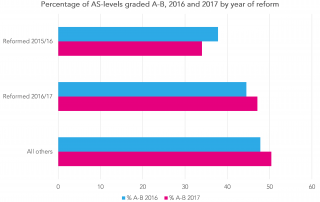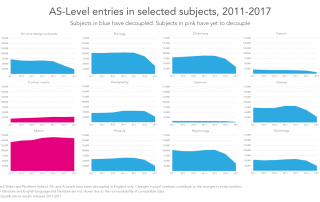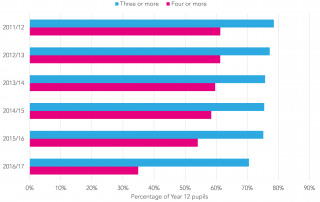How prevalent is Year 12 drop-out from selective schools?
Following the coverage of St. Olave’s school in The Guardian, I revisited the analysis I did on Year 12 retention to examine the prevalence of drop-out from selective schools. I look at a subset of pupils: those who made it to the end of Year 12 and were entered for at least three AS-Levels in [...]











